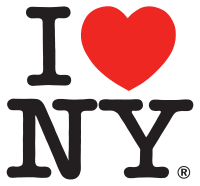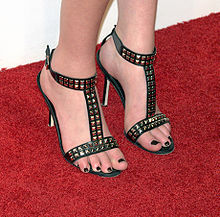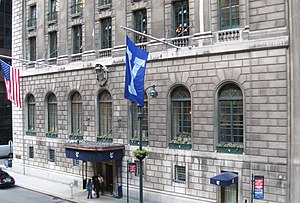Milton Glaser has for a very long time been one of the biggest names in the advertising design world. His studio now seems to have moved to this building in Kips Bay which I have shown before without knowing who was there exactly. To quote Wikipedia:
Biography
Glaser was born into a
Hungarian Jewish family in New York.
[3] Glaser was educated at Manhattan's
High School of Music & Art (now
Fiorello H. LaGuardia High School of Music & Art and Performing Arts), graduated from the
Cooper Union in 1951 and later, via a
Fulbright Scholarship, the Academy of Fine Arts in
Bologna under
Giorgio Morandi He was greatly inspired by his sister's partner, who studied typography at a great depth at the current time.
[4]
In 1954 Glaser was a founder, and president, of
Push Pin Studios formed with several of his Cooper Union classmates.
[5] Glaser's work is characterized by directness, simplicity and originality. He uses any medium or style to solve the problem at hand. His style ranges wildly from primitive to avant garde in his countless book jackets, album covers, advertisements and direct mail pieces and magazine illustrations.
[6] He started his own studio, Milton Glaser, Inc, in 1974. This led to his involvement with an increasingly wide diversity of projects, ranging from the design of
New York Magazine, of which he was a co-founder, to a 600-foot mural for the Federal Office Building in
Indianapolis.
[7]
Throughout his career he has had a major impact on contemporary
illustration and
design. His work has won numerous awards from Art Directors Clubs, the American Institute of Graphic Arts, the Society of Illustrators and the
Type Directors Club. In 1979 he was made Honorary Fellow of the
Royal Society of Arts and his work is included in the
Museum of Modern Art, the
Victoria and Albert Museum, the
Israel Museum and the
Musee de l'affiche in
Paris. Glaser has taught at both the
School of Visual Arts and at
Cooper Union in
New York City. He is a member of
Alliance Graphique International (AGI).
[4]
Glaser is the subject of the 2009 documentary film
To Inform & Delight: The World of Milton Glaser.
[8]
Milton Glaser Inc.
Milton Glaser, Inc. was established in 1974 in Manhattan, and is still producing work in a wide range of design disciplines, including: corporate identities (logos, stationery, brochures, signage, website design, and annual reports), environmental and interior design (exhibitions, interiors and exteriors of restaurants, shopping malls, supermarkets, hotels, and other retail environments), packaging (food and beverage packaging), and product design. Some of the firm's current clients include The Brooklyn Brewery, Jet Blue, Target, Coach, Trump, Eleven Madison Park, Alessi, Juilliard, The Rubin Museum of Art, Theatre For A New Audience, The School of Visual Arts, Bread Alone, and Philip Roth, amongst others.
In addition to Milton, this small Manhattan studio employs three designers (Nicholas Pattison, Sue Walsh, and Molly Kromhout) and a studio manager (Scarlett Rigby).
Awards
In 2004, Glaser won a Lifetime Achievement award from the Cooper-Hewitt National Design Museum.
[9] In 2009, he was awarded the
National Medal of Arts by President
Barack Obama.
[10]
Shows
In addition to commercial enterprises, Milton Glaser’s work has been exhibited world-wide. His most notable single-man shows include:
• Museum of Modern Art, New York (1975)
• Centre Georges Pompidou, Paris (1977)
• Lincoln Center Gallery, New York (1981)
• Houghton Gallery, The Cooper Union, New York (1984)
• Vicenza Museum (1989)
• Galleria Communale d’Arte Moderna, Bologna (1989)
In 1991, he was commissioned by the Italian government to create an exhibition in tribute to the Italian artist, Piero della Francesca, for part of the celebrations on the occasion of his 500th anniversary. This show opened in Arezzo, Italy and one year later (under the sponsorship of Campari) moved to Milan. In 1994, The Cooper Union, Mr. Glaser’s alma mater, hosted the show in New York.
In 1992, an exhibition of drawings titled “The Imaginary Life of Claude Monet” opened at Nuages Gallery, Italy, and in 1995, an adapted version of this show was exhibited in Japan’s Creation Gallery. 1995 also brought a Glaser exhibition to the Art Institute of Boston.
In 1997, the Suntory Museum, Japan, mounted a major retrospective of The Pushpin Studios, featuring past and present works by Milton Glaser and other Pushpin artists. In October 1999, Mr. Glaser’s illustrations of Dante’s Purgatorio were exhibited at the Nuages Gallery in Milan, Italy, and Nuages organized a large exhibition of Mr. Glaser’s work during the 2000 Carnevale in Venice.
Mr. Glaser's work is now represented in the permanent collections at the Museum of Modern Art, New York; The Israel Museum, Jerusalem; the National Archive, Smithsonian Institute, Washington, D.C.; and the Cooper Hewitt National Design Museum, New York.




